Director’s Statement

Total Water Management Strategy
Beginning in 2008, we initiated a ground-breaking strategy called – Total Water Management (TWM) in order to manage all aspects of water resources to achieve an optimal balance between water supply and demand for sustainable use of water resources
and to better prepare the Territory for future uncertainties resulting from global climate change. This TWM strategy focuses primarily on curbing the growth of local water demand and strengthening overall water supply management. Since its inception,
TWM has made good contribution towards water security and reliability for the Territory.
Building on successes we’ve achieved to date, we will continue implementing the initiatives under the TWM strategy and have embarked on a comprehensive review with a view to updating the TWM strategy for strengthening our resilience while staying fully prepared against any uncertainties and challenges. The TWM strategy and its on-going initiatives are moving us towards a water supply structure that comprises multi-faceted sources, including local yield, imported Dongjiang water, seawater for flushing, desalinated water, recycled grey water and rainwater harvesting as well as reclaimed water. These six water supply sources will be the pillars that altogether support Hong Kong’s enhanced water security, reliability and resilience.
Building on successes we’ve achieved to date, we will continue implementing the initiatives under the TWM strategy and have embarked on a comprehensive review with a view to updating the TWM strategy for strengthening our resilience while staying fully prepared against any uncertainties and challenges. The TWM strategy and its on-going initiatives are moving us towards a water supply structure that comprises multi-faceted sources, including local yield, imported Dongjiang water, seawater for flushing, desalinated water, recycled grey water and rainwater harvesting as well as reclaimed water. These six water supply sources will be the pillars that altogether support Hong Kong’s enhanced water security, reliability and resilience.
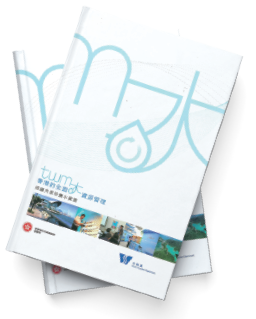
Water Resources
Dongjiang Water
Our local fresh water resources are the result of rainfall capture, but the yield collected from local catchment facilities is not adequate to meet all of Hong Kong’s needs. The amount of local yield is also unstable due to fluctuations in yearly rainfall
totals. Dongjiang (DJ) water, which now provides between 70% to 80% of our fresh water supply, is able to fill the gap arising from our inadequate local yield. Therefore, a reliable and stable DJ water supply arrangement is essential to ensure
water security for Hong Kong.
A new agreement for the supply of DJ water has been concluded with the Guangdong (GD) authorities, covering the 2015-2017 period. The Department has carried out a detailed analysis based on the latest fresh water demand forecast and estimated that the annual requirement for DJ water over the coming three years 2015 to 2017 will not exceed 820 million cubic metres (mcm) with a 99% reliability of water supply. This means that the water supply will be maintained around-the-clock even under the most extreme drought conditions, an event that occurs once in 100 years. The annual supply ceiling of 820 mcm under this new agreement would help maintain the reliability of our water supply in Hong Kong.
A new agreement for the supply of DJ water has been concluded with the Guangdong (GD) authorities, covering the 2015-2017 period. The Department has carried out a detailed analysis based on the latest fresh water demand forecast and estimated that the annual requirement for DJ water over the coming three years 2015 to 2017 will not exceed 820 million cubic metres (mcm) with a 99% reliability of water supply. This means that the water supply will be maintained around-the-clock even under the most extreme drought conditions, an event that occurs once in 100 years. The annual supply ceiling of 820 mcm under this new agreement would help maintain the reliability of our water supply in Hong Kong.
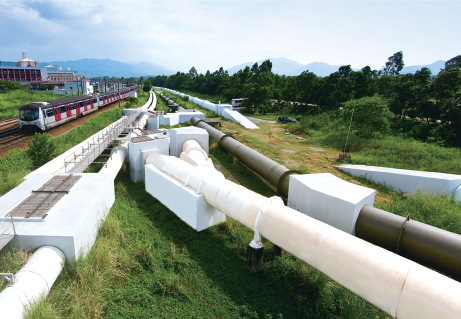
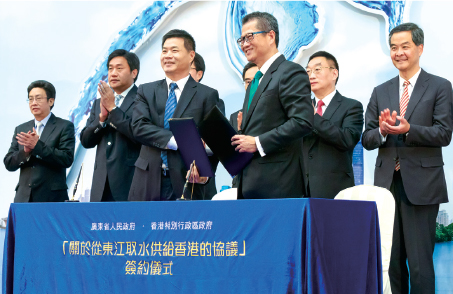
Raw Water Supply Pipeworks from Dongjiang
Signing Ceremony for Dongjiang Water Supply Agreement
Expansion of the Salt Water Supply System
To help save fresh water resources, we have long taken full advantage of our geographic proximity to the South China Sea by using salt water for toilet flushing since the 1950s. The current salt water supply coverage is about 80% of the total population
in Hong Kong.
We have launched the New Territories Northwest Salt Water Flushing Supply Scheme to expand our salt water supply system to cover completion of supply systems in Tuen Mun East, Yuen Long and Tin Shui Wai. Together with the extra expansion to Pok Fu Lam, this will help increase the salt water supply coverage from 80% to 85% of the total population in Hong Kong. While conversion of consumers’ flushing supply from existing fresh water supplies to salt water in these areas continues apace, we will move forward with our expansion plan for a salt water supply system in Tung Chung in Lantau Island.
We have launched the New Territories Northwest Salt Water Flushing Supply Scheme to expand our salt water supply system to cover completion of supply systems in Tuen Mun East, Yuen Long and Tin Shui Wai. Together with the extra expansion to Pok Fu Lam, this will help increase the salt water supply coverage from 80% to 85% of the total population in Hong Kong. While conversion of consumers’ flushing supply from existing fresh water supplies to salt water in these areas continues apace, we will move forward with our expansion plan for a salt water supply system in Tung Chung in Lantau Island.
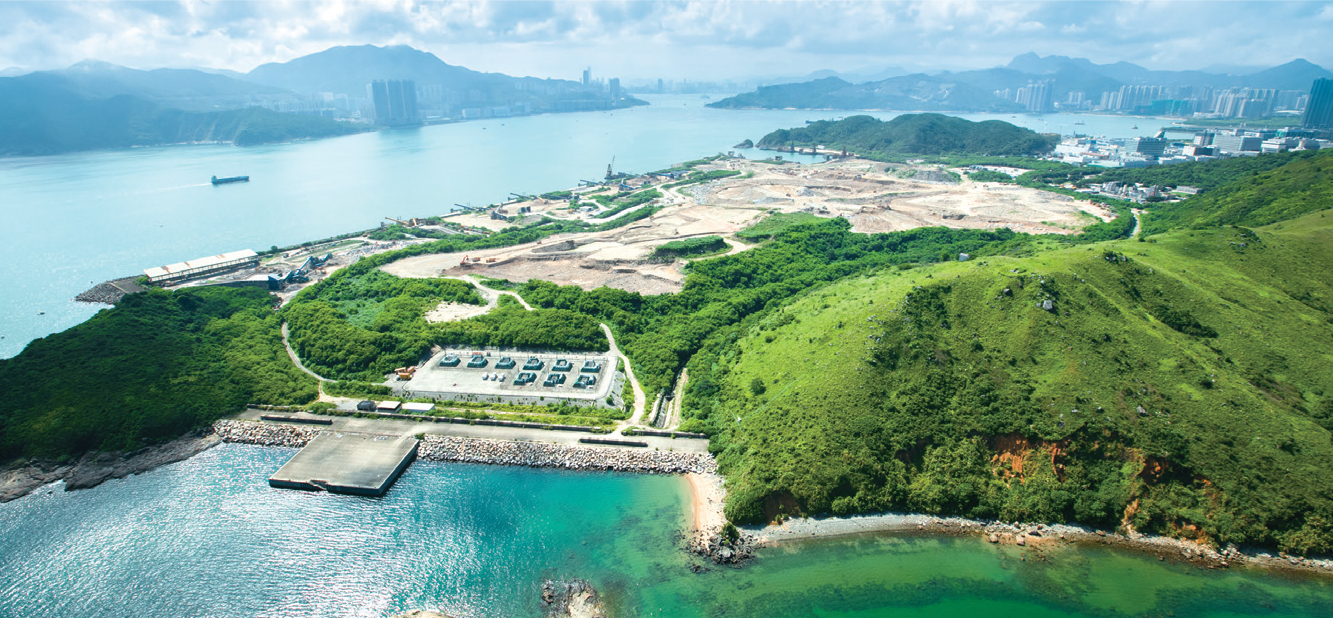
Site of Proposed Desalination Plant
Seawater Desalination
To counter the possibility that climate change could disrupt the security of our water supply in Hong Kong, we have embarked on the construction of a desalination plant in Tseung Kwan O, using advanced reverse osmosis technology. Our preliminary studies
have confirmed the technical feasibility and environmental viability of the project and in June 2015, we obtained the Legislative Council’s approval for funds to employ consultants to proceed with the design of the project. We aim to commence the
construction of the plant early by 2017 or 2018. The target output of the plant is expected to meet about 5% of the fresh water demand in Hong Kong with provisions for expanding its capacity in the future to meet about 10% of the Territory’s total
water needs.
Water Reclamation
To secure new water resources, we have closely studied the use of water reclamation, i.e. water derived from treated sewage effluent.
Our efforts at introducing greater use of reclaimed water from treated sewage effluent have led us to begin designing the infrastructure necessary for supplying this type of water resource to the northeast New Territories (NENT) for toilet flushing and other non-potable uses. Reclaimed water supplies will be commissioned in phases, tentatively starting from 2022, for supply to Sheung Shui, Fanling and Kwu Tung North. We estimate fresh water savings of 21 million cubic meters every year after full commissioning of the reclaimed water supply system to the above noted areas. Both the seawater and reclaimed water networks together will provide flushing water to about 90% of the population and the population using fresh water for flushing will be reduced to 10%.
Our efforts at introducing greater use of reclaimed water from treated sewage effluent have led us to begin designing the infrastructure necessary for supplying this type of water resource to the northeast New Territories (NENT) for toilet flushing and other non-potable uses. Reclaimed water supplies will be commissioned in phases, tentatively starting from 2022, for supply to Sheung Shui, Fanling and Kwu Tung North. We estimate fresh water savings of 21 million cubic meters every year after full commissioning of the reclaimed water supply system to the above noted areas. Both the seawater and reclaimed water networks together will provide flushing water to about 90% of the population and the population using fresh water for flushing will be reduced to 10%.
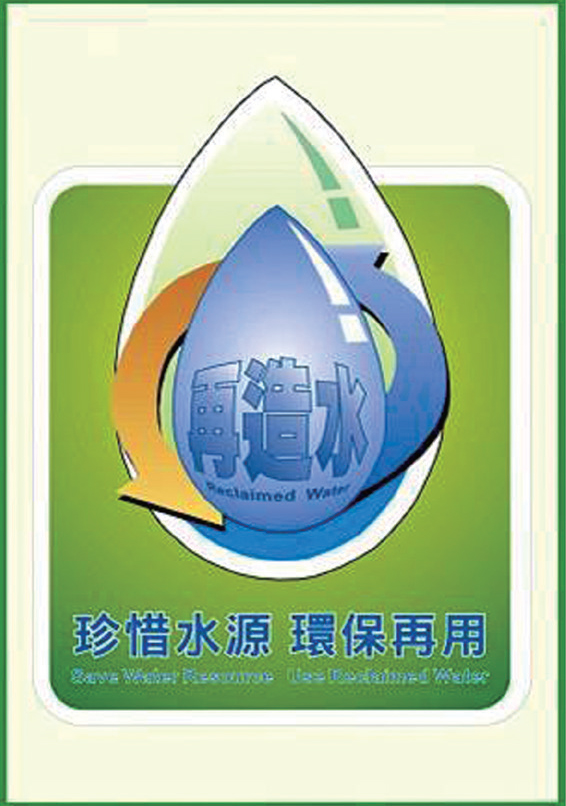
Grey Water Recycling and Rainwater Harvesting
The Department has made dedicated effort to making use of recycled grey water and rainwater as supplementing water resources. With this in mind, the Development Bureau (DEVB) and Environment Bureau (ENB) have issued an updated joint technical circular
that sets out more detailed guidelines on using recycled grey water and rainwater harvesting in government buildings.
In addition to government buildings, we have also begun planning a pilot scheme to supply recycled grey water for flushing purposes in developments at the Anderson Road Quarry. We will continue to work closely with all relevant government departments to finalise the scheme layout for a grey water recycling plant in the Anderson Road Quarry development and take it forward to the investigation and detailed design stage by end 2016.
In addition to government buildings, we have also begun planning a pilot scheme to supply recycled grey water for flushing purposes in developments at the Anderson Road Quarry. We will continue to work closely with all relevant government departments to finalise the scheme layout for a grey water recycling plant in the Anderson Road Quarry development and take it forward to the investigation and detailed design stage by end 2016.
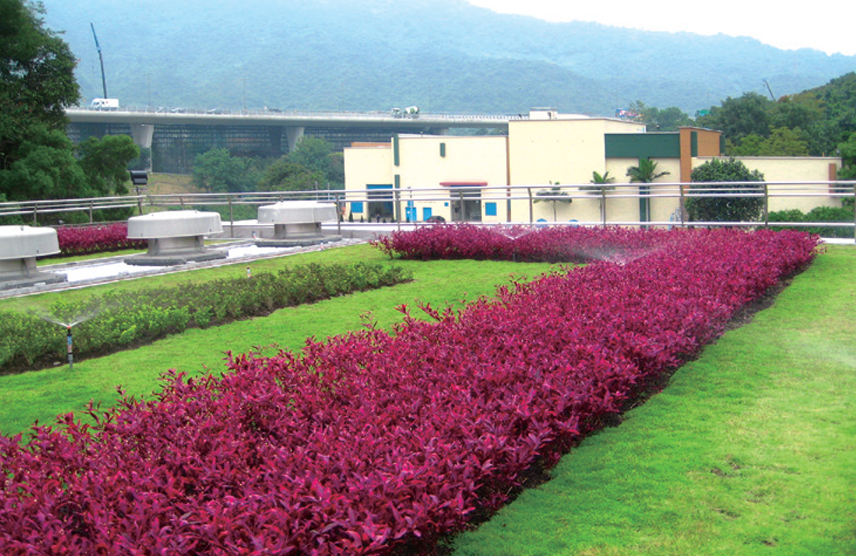
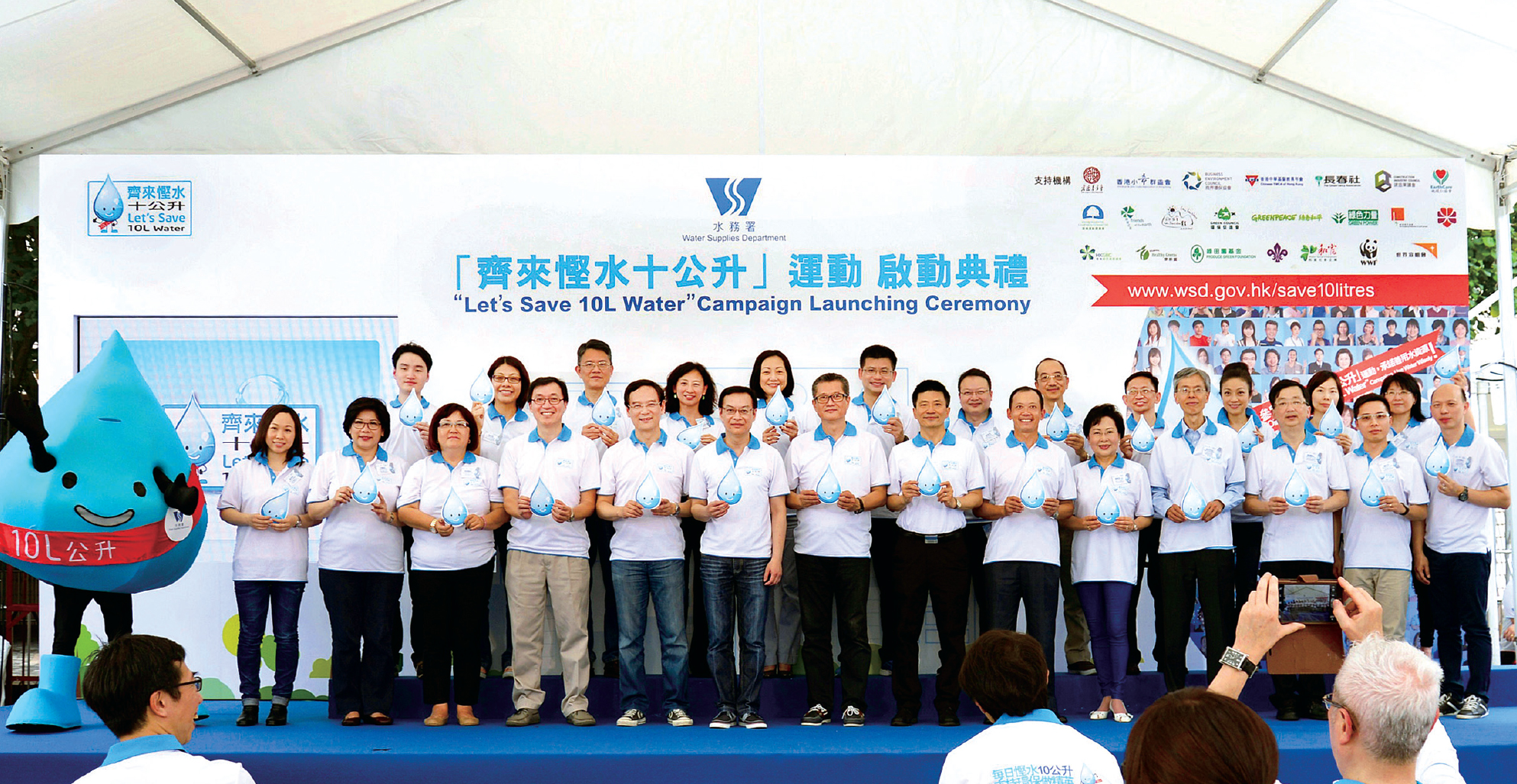
Fostering a Mindset of Water Conservation
“Let’s Save 10L Water” Campaign
The “Let’s Save 10L Water” Campaign was unveiled in March 2014 and an official launch ceremony took place on 17 May 2014 at the Piazza of the Hong Kong Cultural Centre at Tsim Sha Tsui. The aim of this campaign is to encourage the public to implement
water saving practices and monitor their own water saving performance by signing a “Water Conservation Declaration”. Each participating household would be entitled to receiving a pair of complimentary flow controllers to help them conserve water.
This campaign has received an overwhelming response from the public and as of March 2015, complimentary flow controllers had already been delivered to over 130,000 participating households.
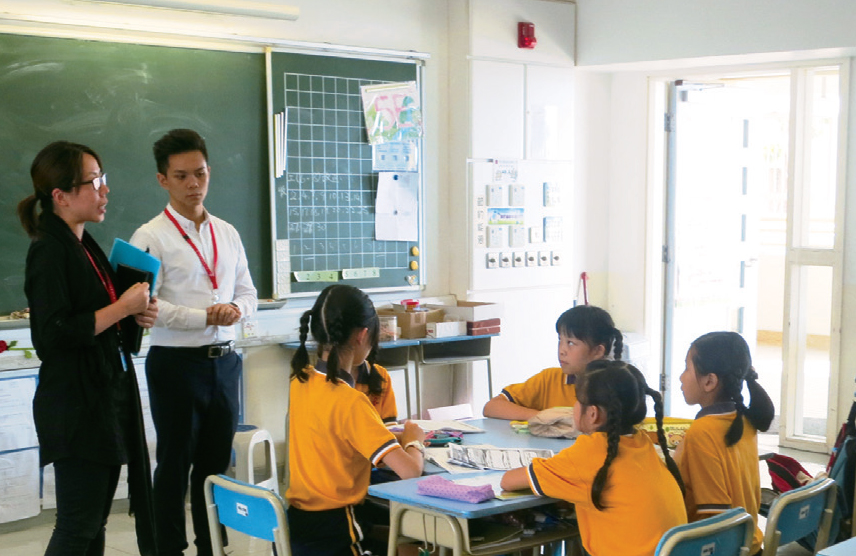
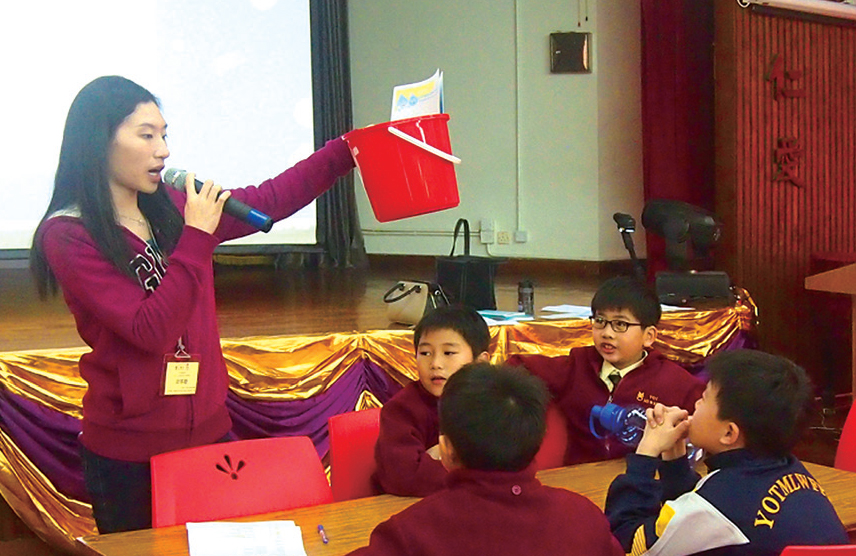
|
Cherish Water Campus
All along we understand that early education is an effective means to inculcate the younger generation about adopting good water saving habits that will last for a lifetime. We have also seen the strategic importance of working in close
partnership with schools to promote water conservation culture amongst the students. Against this, we have in collaboration with the primary schools developed a new “Integrated Education Programme on Water Conservation (IEP)” that consolidates
existing school activities and combines them with new initiatives to keep the concept of sustainable water conservation a key area of study in schools. |
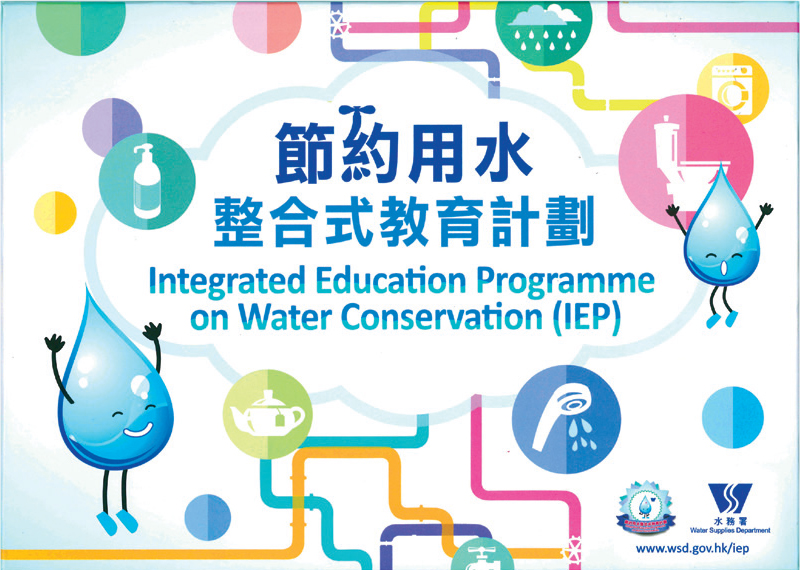
|
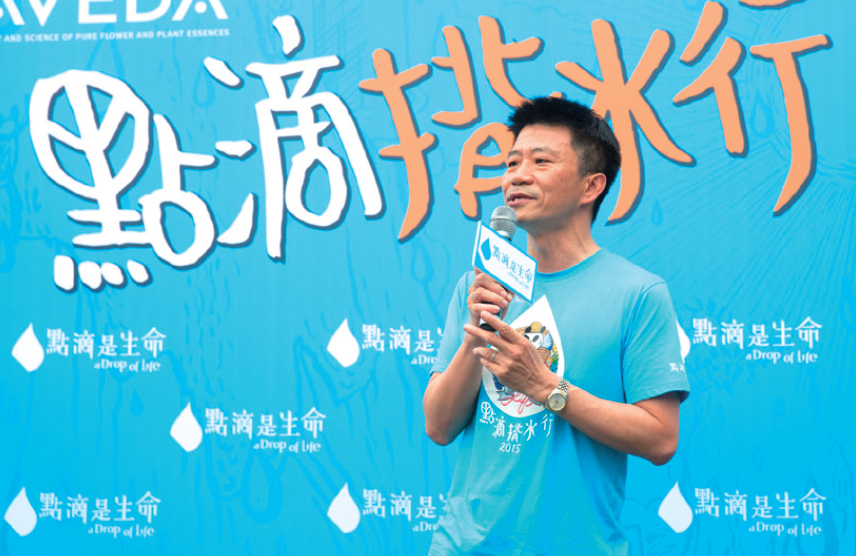
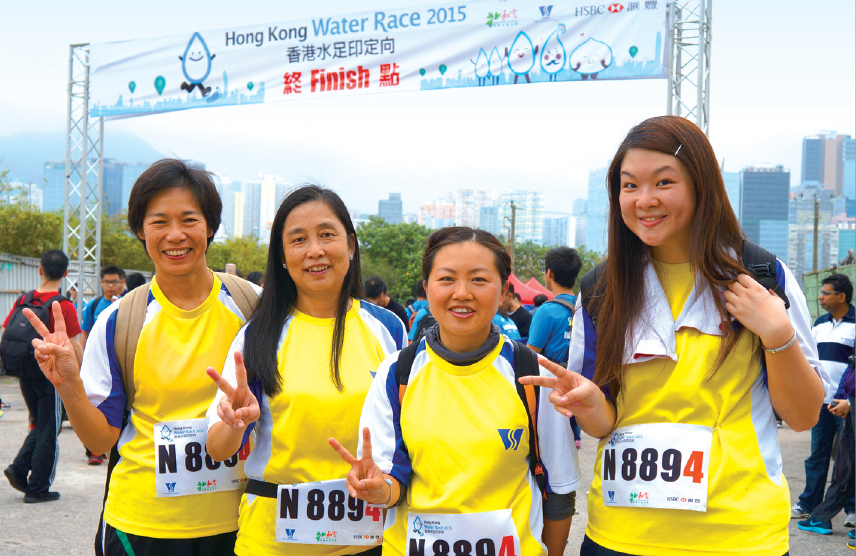
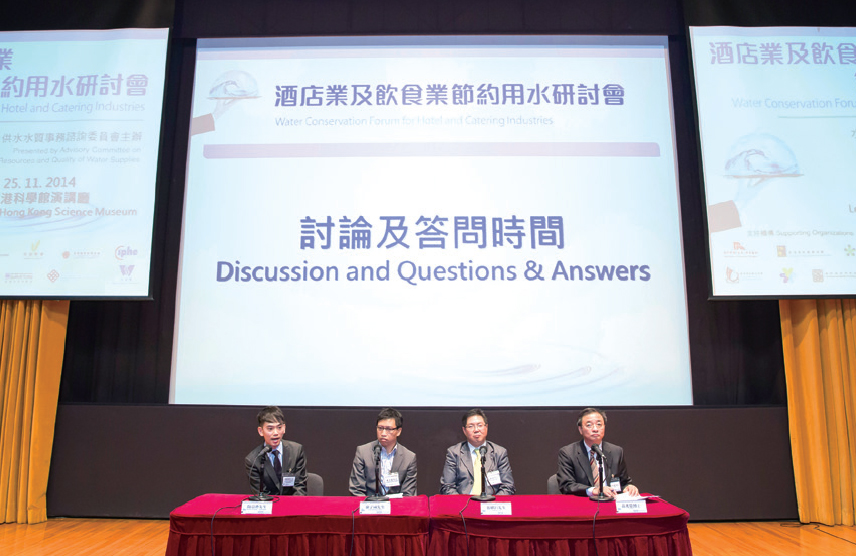
Walk for Living Water
Hong Kong Water Race 2015
Water Conservation Forum for Hotel and Catering Industries
Cooperation with Non-governmental Organisations
We have also established cooperative ventures with non-governmental organisations (NGO) to raise public awareness of water conservation. Amongst others, we work closely with Wofoo Social Enterprises in organising the “Hong Kong Water Race” in which over
3,000 participants take part each year. We also support the Amity Foundation’s annual “Walk for Living Water” event, and assist World Wildlife Fund (WWF) Hong Kong in promoting their “STEP – Sustainable Lifestyle Target Education Programme”, which
aims to enhance primary students’ knowledge about water conservation.
Apart from the above, we as well conduct water efficiency audits and develop best practice guidelines for major high water-consuming commercial operations including hotel and catering. To help support these sectors, the WSD collaborated with the catering and hotel industry stakeholders and held a special forum on 25 November 2014 to share experiences about implementing best water use practices and water conservation measures in across these key industries.
Apart from the above, we as well conduct water efficiency audits and develop best practice guidelines for major high water-consuming commercial operations including hotel and catering. To help support these sectors, the WSD collaborated with the catering and hotel industry stakeholders and held a special forum on 25 November 2014 to share experiences about implementing best water use practices and water conservation measures in across these key industries.
Water Resources Education Centre
We have been running a temporary Water Resources Education Centre in Mong Kok since December 2012 to enhance young people’s knowledge about water conservation through the use of exhibits, live demonstrations and interactive games. By the end of 2014,
the Centre has received nearly 16,000 visitors, mostly students. Based on our survey, 86% of students and 99% of teaching staff and parents who visited the Centre considered the visits to be beneficial in raising their awareness of water conservation.
A permanent centre will be accommodated in a new WSD building in Tin Shui Wai by the end of 2018 tentatively. The new premises for the Centre will triple the size of the temporary cente in Mong Kok and is specially designed with enhanced contents
on water resources and cater for a wider spectrum of visitors.
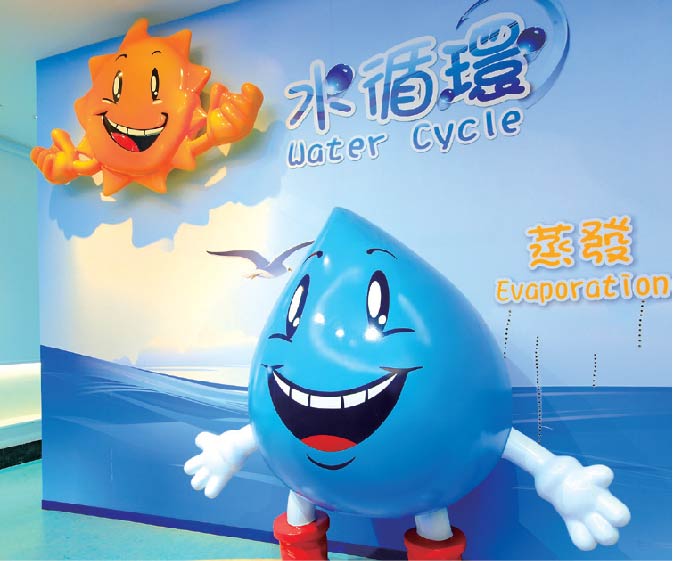
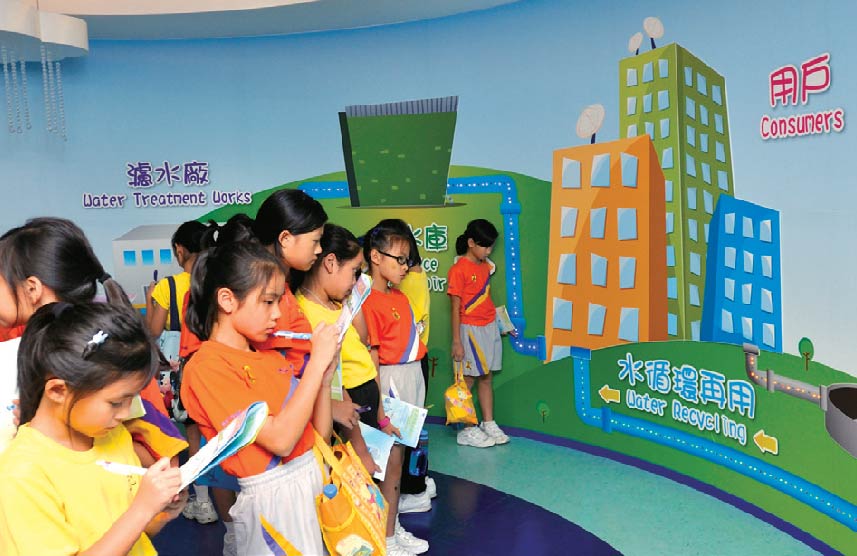
Promotions Extended to the Community
Building on our promotions of water conservation in schools and other sectors throughout the Territory, the WSD has also started initiating activities that now go beyond educational institution out to the wider community at large.
So that general Hong Kong residents can gain a deeper insight into how to better conserve water, we have set up an easily accessible roving exhibition platform by means of the WSD Mobile Showrooms that make regular visits from district to district and feature a host of interesting interactive exhibits. From November 2013 to February 2015, two Mobile Showroom vehicles had made stops in every district throughout Hong Kong, visiting a total of 200 housing estates.
So that general Hong Kong residents can gain a deeper insight into how to better conserve water, we have set up an easily accessible roving exhibition platform by means of the WSD Mobile Showrooms that make regular visits from district to district and feature a host of interesting interactive exhibits. From November 2013 to February 2015, two Mobile Showroom vehicles had made stops in every district throughout Hong Kong, visiting a total of 200 housing estates.
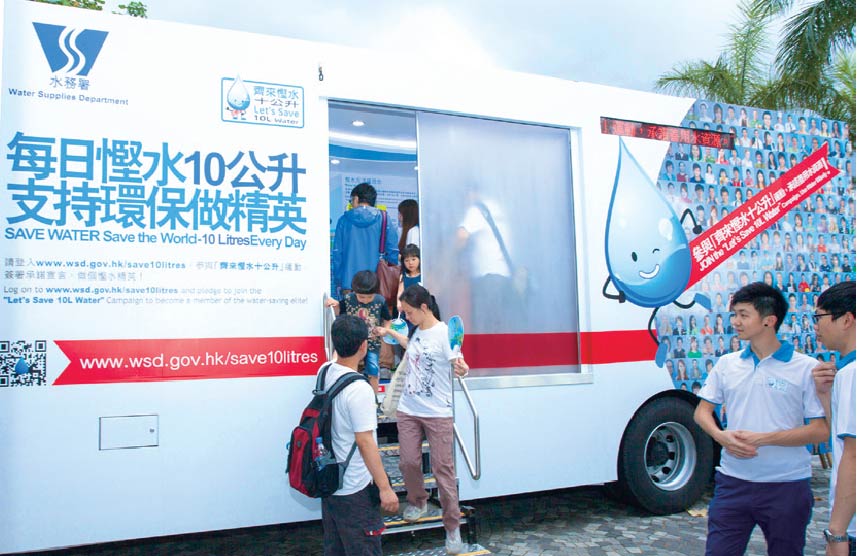
Application of Hardware
We have also dedicated efforts on the application of hardware like flow controllers on water taps and showers to help reduce water consumption. Since August 2014, we have initiated a series of programmes to install flow controllers in public rental housing
estates, government buildings and schools. By the end of September 2015, we have installed over 80,000 flow controllers in 20 public housing estates, 1,000 government premises and 250 schools and tertiary educational institutions.
We have also implemented the Voluntary Water Efficiency Labelling Scheme to advise consumers about the efficiency of common types of plumbing fixtures and water-consuming appliances in order to help them make the best product choices for water conservation. To date, the WSD has launched the scheme for five types of water devices for registration, namely showers for bathing, water taps, washing machines, urinal installations and flow controllers. We are now studying the option to mandatory use of water efficient appliances such as water taps and showers to be installed in new buildings.
We have also implemented the Voluntary Water Efficiency Labelling Scheme to advise consumers about the efficiency of common types of plumbing fixtures and water-consuming appliances in order to help them make the best product choices for water conservation. To date, the WSD has launched the scheme for five types of water devices for registration, namely showers for bathing, water taps, washing machines, urinal installations and flow controllers. We are now studying the option to mandatory use of water efficient appliances such as water taps and showers to be installed in new buildings.
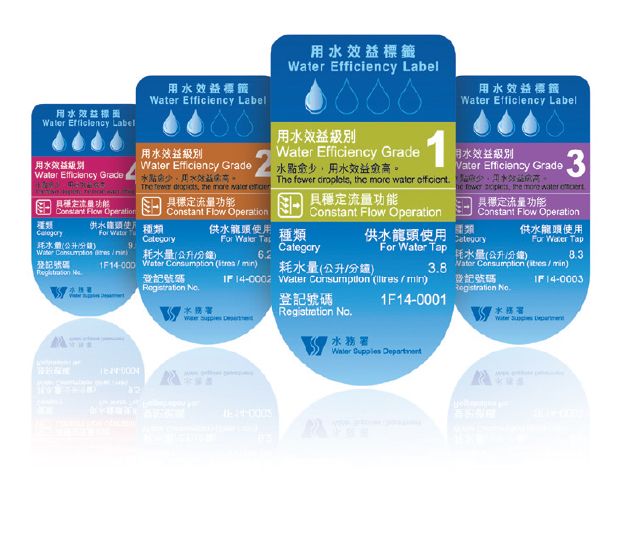
Smart City
Water Intelligent Network (WIN)
We plan to establish a Water Intelligent Network (WIN) in Hong Kong through installation in phases of network monitoring and sensing equipment within District Metering Areas (DMAs) and associated Pressure Management Areas (PMAs) in some DMAs in the water
supply network. This will enable the network to be continuously monitored, managed, operated and maintained in the most effective, efficient and sustainable way.
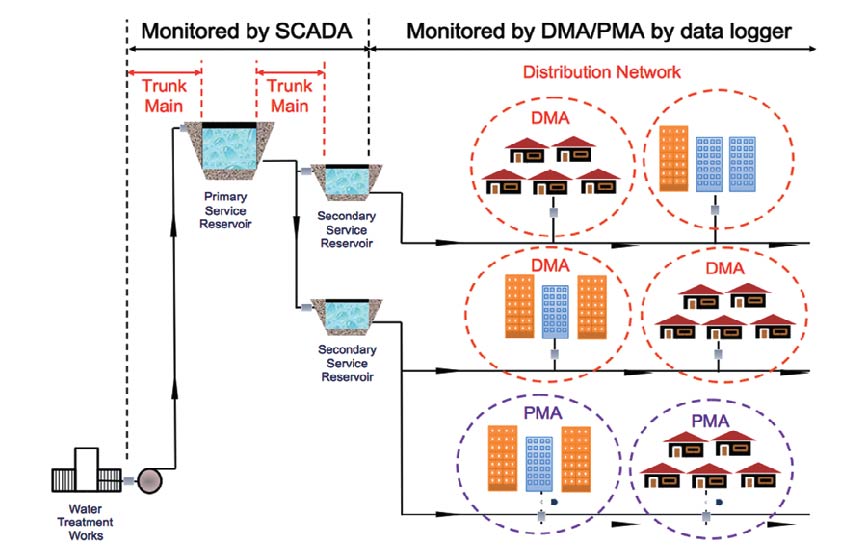
A total of nearly 2,000 DMA/PMAs will be established to enable intelligent network performance monitoring. Data collected from the monitoring and sensing equipment will be used to determine the most effective network management measures in order to maintain
its overall operational health.
Smart Meter
In order to actively respond to the government’s latest initiative to develop Hong Kong into a green and resource-efficient city, we have put forward a Smart Metering Initiative.
Smart metering provides automatic and essentially real-time reading of water meters and historical consumption data to enable better planning and management of water supplies. It also supplies consumption data that can be made available to consumers through the Internet or a mobile phone app for their reference to help them establish good water conservation habits and rectify inside service leakage.
As we move forward with this technology, we have conducted a pilot study and established all the technical requirements. We aim to install smart water meters in new building sites, the first of which will be the Anderson Road and Kowloon East development including Kai Tak area.
Smart metering provides automatic and essentially real-time reading of water meters and historical consumption data to enable better planning and management of water supplies. It also supplies consumption data that can be made available to consumers through the Internet or a mobile phone app for their reference to help them establish good water conservation habits and rectify inside service leakage.
As we move forward with this technology, we have conducted a pilot study and established all the technical requirements. We aim to install smart water meters in new building sites, the first of which will be the Anderson Road and Kowloon East development including Kai Tak area.

Ir LAM Tin Sing, Enoch, JP
Director of Water Supplies
15 October 2015



